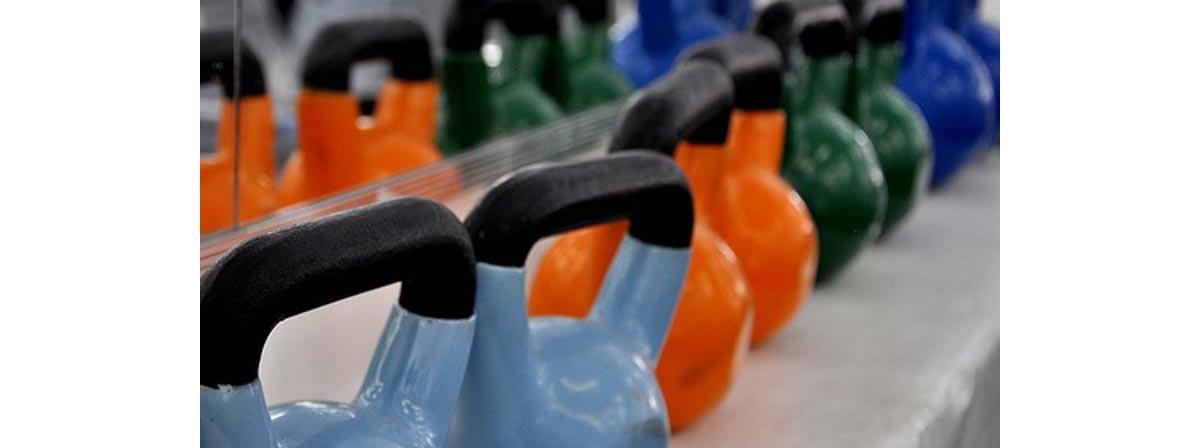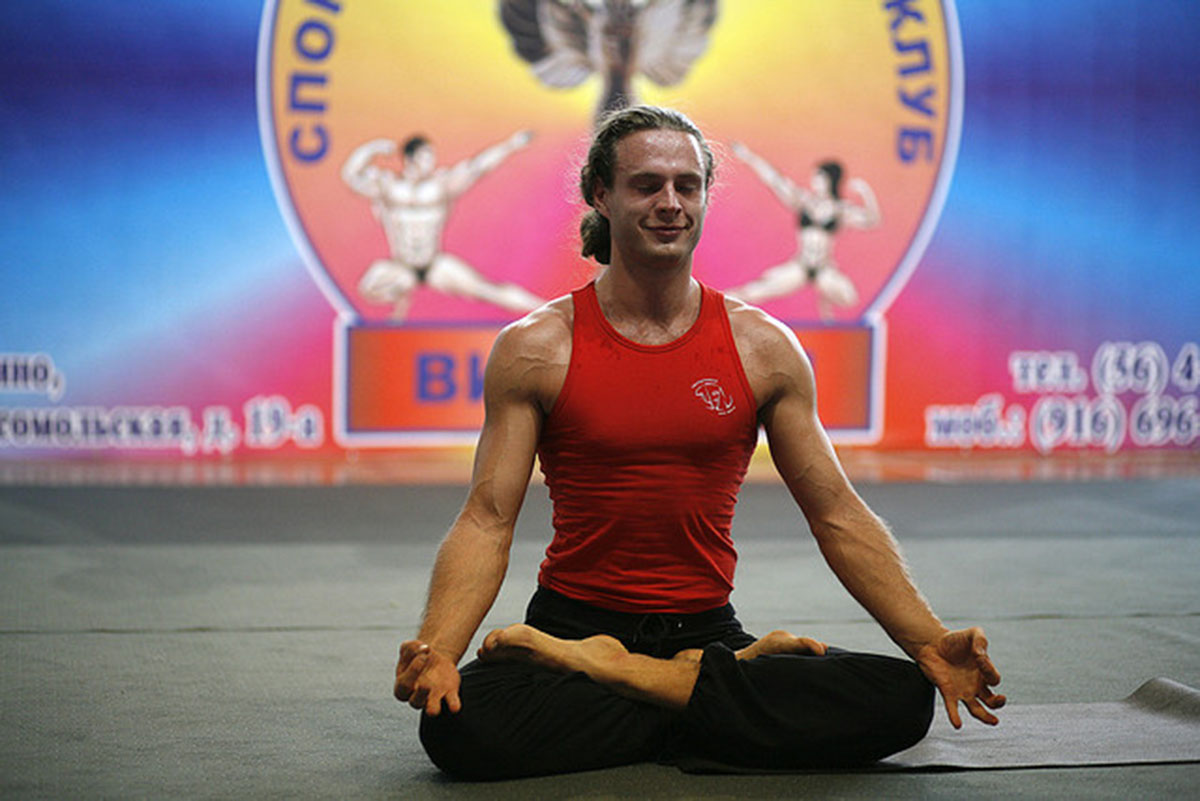You might get a better training session in a fully-equipped gym. But there are alternatives. You can get a good training session at home in little time and with minimal equipment.
The gym industry is very happy to have you. But it's happiest of all to have your membership; most commercial gyms couldn't possibly accommodate all their members if everyone who actually has a membership went there three to five times a week. And while a full complement of equipment helps you to get a better session, you can train alone at home with minimal equipment and make a substantial difference to your health and fitness.
Busy lives mean we can’t always get to the gym. But these exercises are a good replacement when time is tight.
Kettlebell Swings
The simplest of the simple. A kettlebell is cheap: a 16kg bell can cost as little as £20 to £25. And they're simple to use. Kettlebell swings are the foundational exercise of kettlebells so if you wanted to progress this is where you should start. But even if you never want to do anything more complicated than swings, you can still get some pretty major benefits including cardiovascular, work capacity and even strength improvements. Just 10 minutes of swings can be effective.
How It's Done
Stand with your kettlebell between your feet. Grip the kettlebell handle with both hands, palms down, and with your arms straight and your shoulders retracted. Stand, and swing the kettlebell out away from you with the movement of your hips, not your arms. Then pull it hard toward your hips and move your hips back. In the bottom position you should be almost facing the floor, with the kettlebell between your legs, your knees almost straight and your back slightly arched. By pulling on the bell to control it and driving forward with your glutes, move to the top position with your hips extended, shoulders retracted slightly and the bell at shoulder height.
Never "pick up"the bell with your arms or shoulders. Your arms are just holding it in place.
READ No Time for the Gym? Use Kettlebells for a Full Body Workout
Ab Wheel Rollouts
Ab wheels look like something that belong on the 3AM Shopping Channel. But just because they're brightly colored and made of plastic doesn't mean they're a gimmick. Dan John and Ross Enemait both swear by them, and they do more than "give you abs." When you do an isolation abdominal exercise like sit-ups (not really an abdominal exercise), crunches (designed to produce hypertonicity without increasing strength or bulk) or whatever it is I see people doing in those miniature astronaut rocker things in the gym, you're taking your abdominals through an unnatural range of motion and training them in isolation. These are normally trunk flexion exercises too, and excessive trunk flexion is a bad idea. Says who? Dr Stuart McGill, that's who. (Source: T-Nation.)
What's a better idea? Resisting force across a range of motion that mirrors a natural movement and requires impressive strength. That's the ab wheel for you.
How It's Done
Start on your knees. Put your knees on a towel about shoulder width apart. Put your ab wheel on the floor in front of you and roll it out, keeping your arms straight and your spine locked, until the wheel is overhead and your nose is touching the floor. Then return to the original position by pulling down on the ab wheel. Get good and you can do them on your feet instead of your knees. These will improve your pullups too!
Basic Yoga At Home
The big advantage of yoga is that it requires almost no equipment. Its main component is you. It's also possible to learn some basic yoga from Youtube or even written sources. That's no substitute for a properly qualified teacher but it does give you something you can do at home on nights when you can't get to the gym, or even days when you feel particularly stiff.
Most people who are just beginning yoga are advised to start with sun salutations. This is a simplified version.
How It's Done
Start out on your hands and knees, with your hands under your shoulders and your knees under your hips. Rock back until your butt is on your feet and your arms are straight out overhead, and hold that position for a count of three deep, slow breaths. That's "Child Pose." Then rock forward and let your hips come down to the floor. Extend your neck and upper back and look up toward the ceiling. Keep your arms straight. Hold for three breaths. That's "Scorpion Pose."
Rock back to all fours and step your left foot forward until it's outside your left hand. Pick your right knee up off the floor and extend your right leg. Stand up from the waist until your torso is erect. Tense your glutes and lightly tense your abdominal muscles to make sure your back leg bends at the hip, not the waist. Hold for three breaths: this is "Lunge," for obvious reasons. Put the back knee back down, return to all fours and repeat on the other side. Return to "Child," then all fours, and finish.
Resistance Band Training
For about £30 to £40 you can buy a resistance band that offers something like half bodyweight resistance. That's enough resistance to add a strength component to the majority of your training, and you're getting it from a tool you can keep in your sock drawer or carry around literally in your pocket. If you work a job where you're "on call" you can train in 5-minute blocks when you get the time.
If you travel for work you can take your band with you to the hotel room.
How It's Done
I'd keep it simple to start. Buy a "closed" band that forms a loop. Start out with just alternating pushups and squats. You can stand on the ends of the band for squats and run the band over your shoulders for a loading pattern like a back squat or over your hands in a rack position for a loading pattern like a front squat. The advantage with bands is that they get more "resist-y" the longer you stretch them, so just as your squat is getting easier because you're out of the hole, your band is getting tougher to compensate! For pushups, run the band over your back level with your shoulders and put your hands on the ends. Pushups are a preferable exercise to bench presses anyway for most people and banded pushups will give you a serious workout cheaply and in little time, without waking up the neighbors or requiring a gigantic, room-filing (and bank-account-emptying) home gym.
Pullup Bar Training
Pullup bars are the most under-appreciated piece of training equipment out there. They're versatile and simple. You can use them for everything from scary strength exercises that put the vast majority of barbell-lifting bros to shame (front lever pullups, anyone?) to spine-relaxing rehab exercises and gentle mobility drills.
The only thing they won't do much for is your glutes and hamstrings.
How It's Done
Start with a basic hang. Hang form your pullup bar with your arms straight and relax your spine. Begin to move your shoulderblades up and down your back, and practice "scorpions" by arching your upper back until your sternum faces the bar while you're hanging. Then add hollows: curl slightly until your body forms a banana-like shape. Alternate hollows and arches, where you flex in the opposite direction. Yes, it's basic, but try it. You'll be surprised how effective it is in building core and grip strength and helping your spine to relax at the same time. Later you can move on to hanging Ls, Skin the Cats and pullups.
If you like what you've read or you'd like to add something, get in touch in the comments section below!




Your thoughts on this